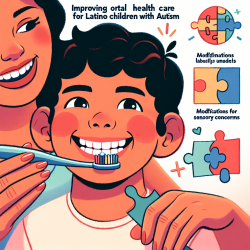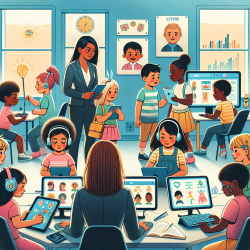Introduction
Oral health is a crucial aspect of overall well-being, yet it remains one of the most neglected health needs among children in the United States. This issue is particularly pronounced among children from minority groups, including Latino children with autism. A recent study titled "Toothbrushing and Oral Care Activities of Autistic and Non-Autistic Latino Children" sheds light on the unique challenges and strategies involved in improving oral care routines for these children.
Research Insights
The study involved 18 Latino families, including 10 with autistic children and 8 with non-autistic children, who recorded their children's oral care routines over three days. The findings highlighted two significant themes: parental involvement and modifications to the oral care routine.
Parental Involvement
Parental involvement was a key factor in the oral care routines of autistic children. Parents often provided verbal prompts, physical assistance, and encouragement to help their children complete their oral care tasks. This involvement was crucial in ensuring that autistic children brushed their teeth for the recommended duration and used proper techniques.
Sensory and Habitual Modifications
The study also identified various modifications that parents made to accommodate their children's sensory sensitivities. These included using timers to ensure adequate brushing time, employing electric toothbrushes, and creating a comfortable environment by adjusting lighting or allowing the child to choose their brushing location.
Practical Strategies for Practitioners
- Encourage parents to be actively involved in their child's oral care routine by providing verbal prompts and assistance as needed.
- Suggest the use of timers or electric toothbrushes to help children brush for the recommended duration.
- Work with families to identify and address sensory sensitivities that may affect oral care, such as the taste of toothpaste or the texture of toothbrush bristles.
- Educate parents on the importance of incorporating flossing and mouthwash into their child's routine, especially for those at higher risk of dental caries.
Conclusion
Improving oral care routines for Latino children with autism requires a collaborative effort between parents, practitioners, and educators. By understanding the unique challenges these children face and implementing targeted strategies, we can enhance their oral health outcomes and reduce disparities. For practitioners looking to improve their skills, this study provides valuable insights and actionable recommendations.
To read the original research paper, please follow this link: Toothbrushing and Oral Care Activities of Autistic and Non-Autistic Latino Children.










